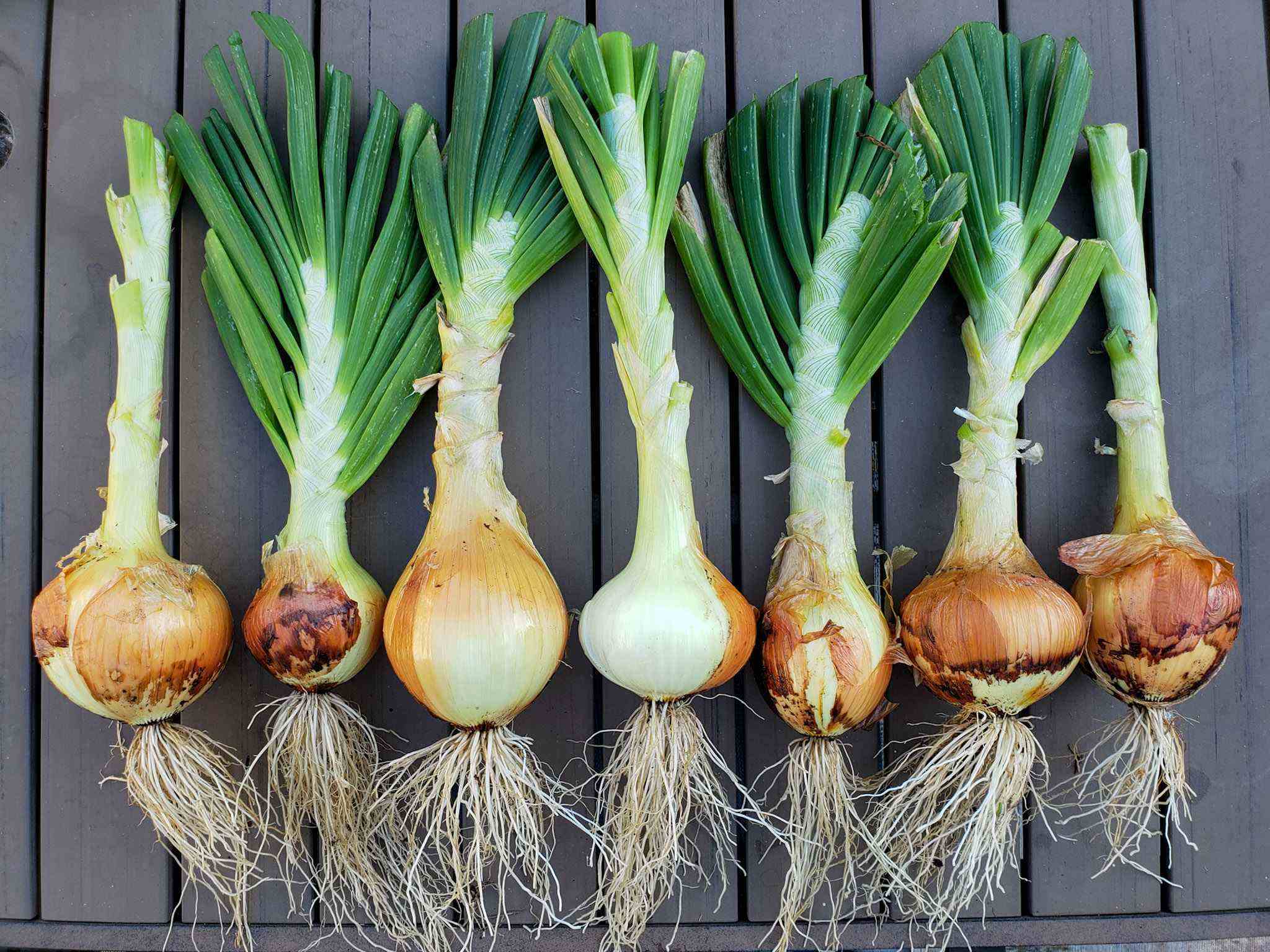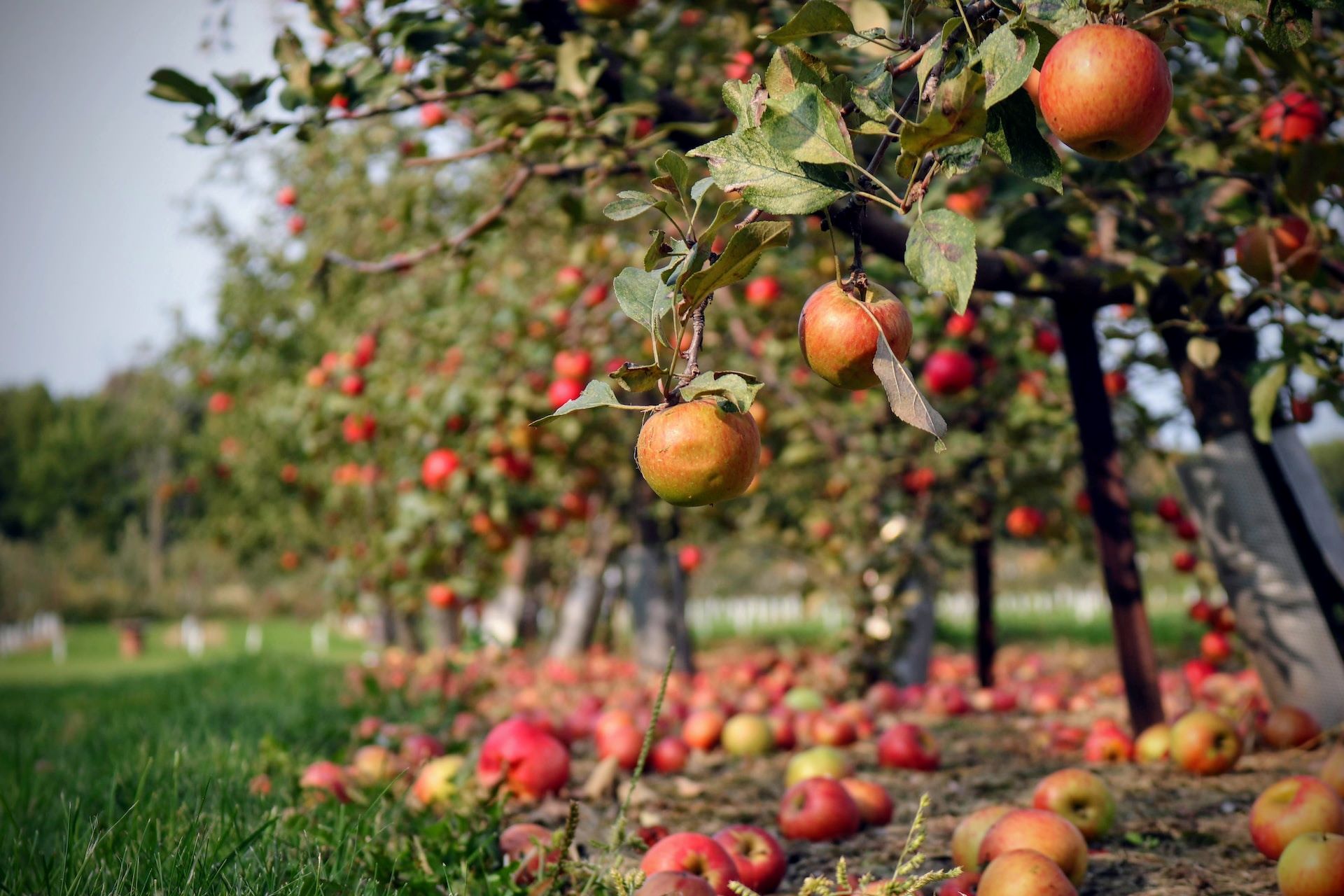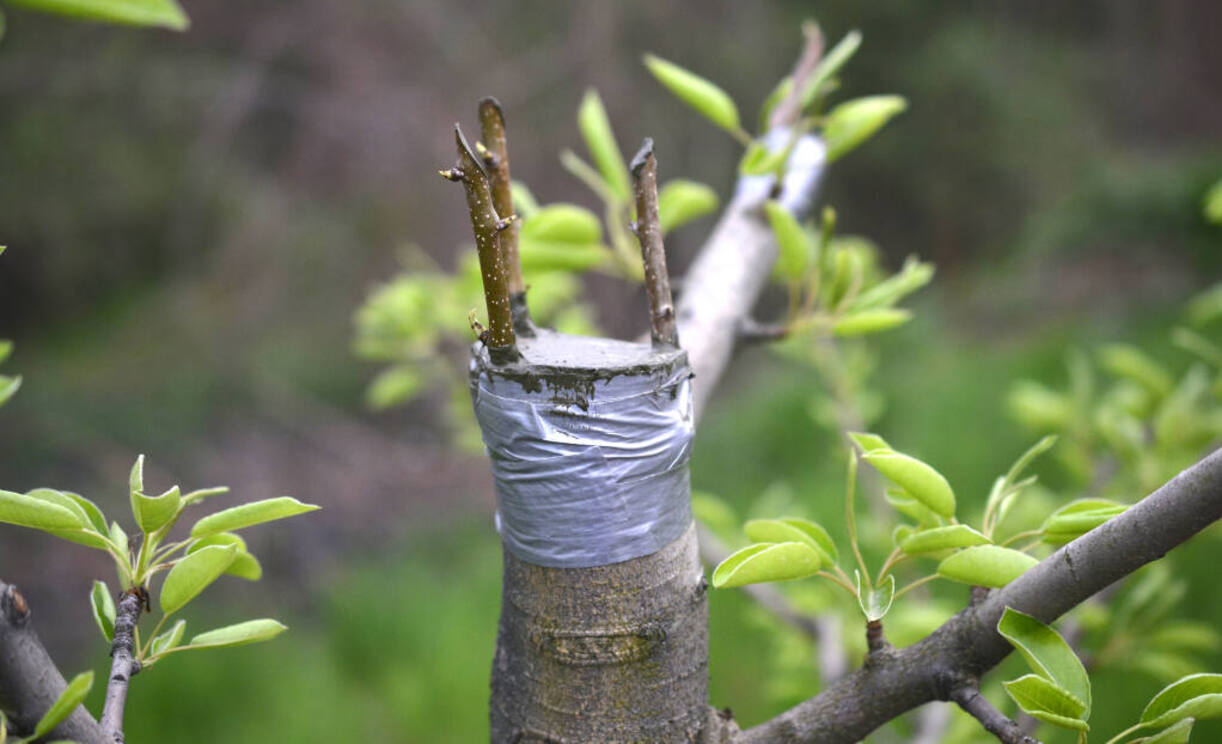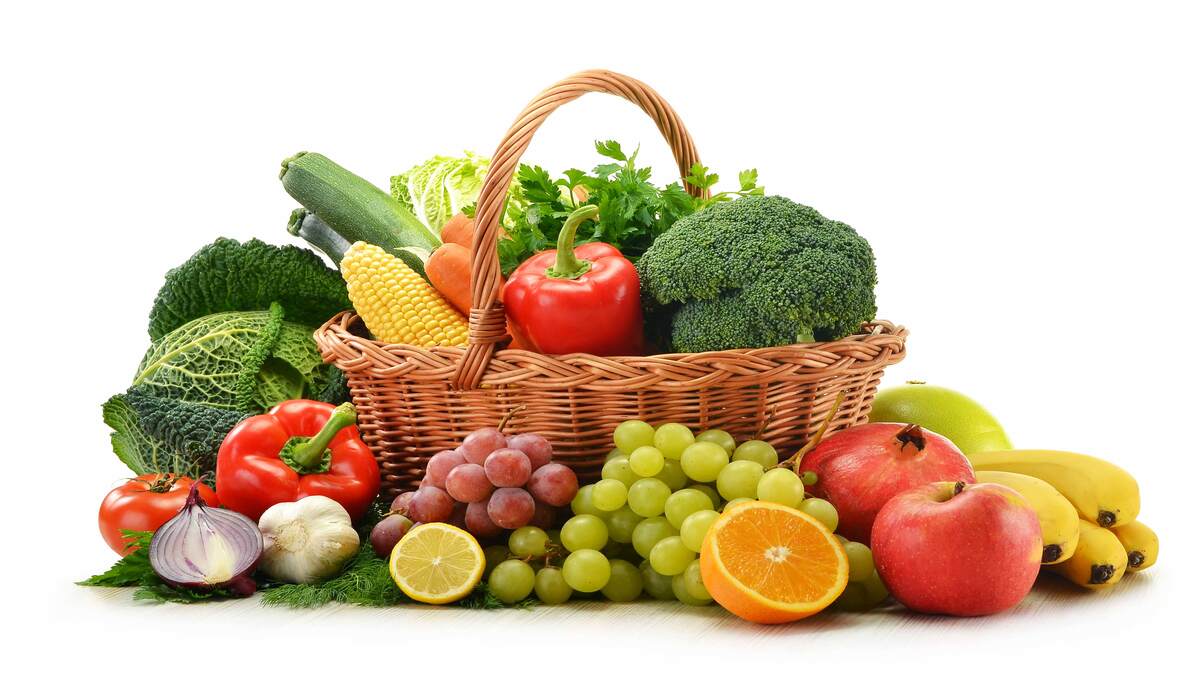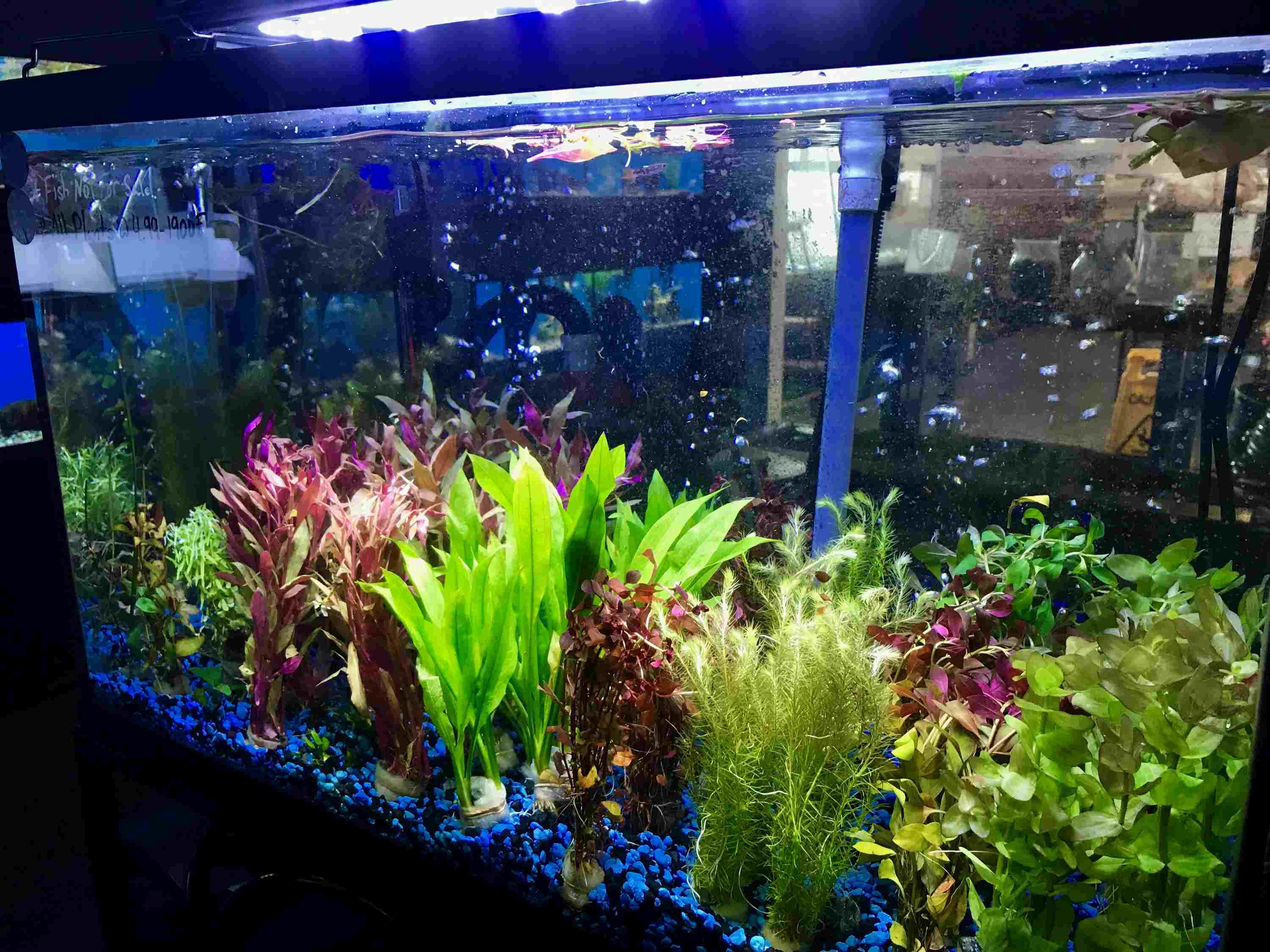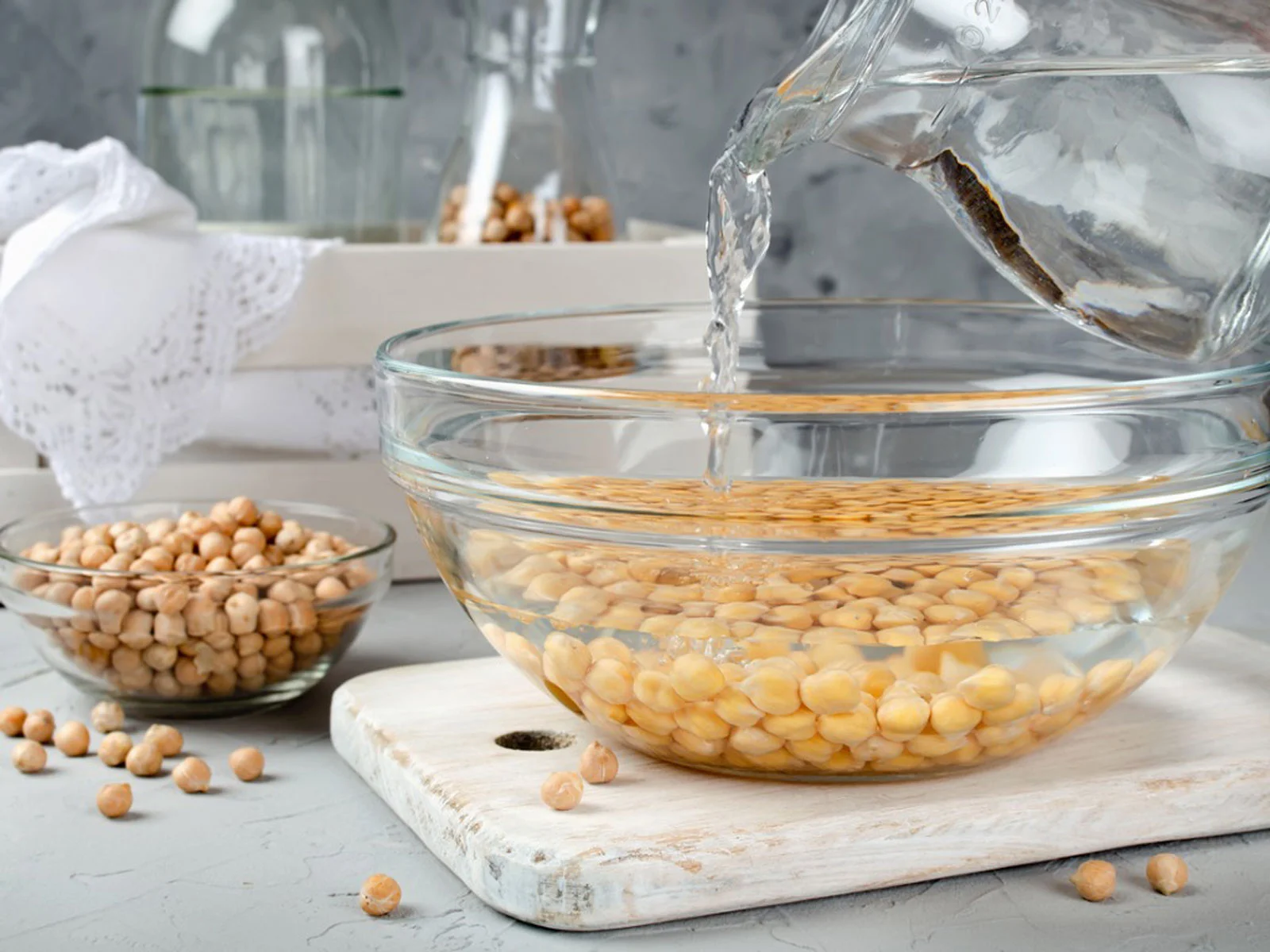Home>Gardening Basics>Getting Started>What To Know Before Planting Fruit Trees
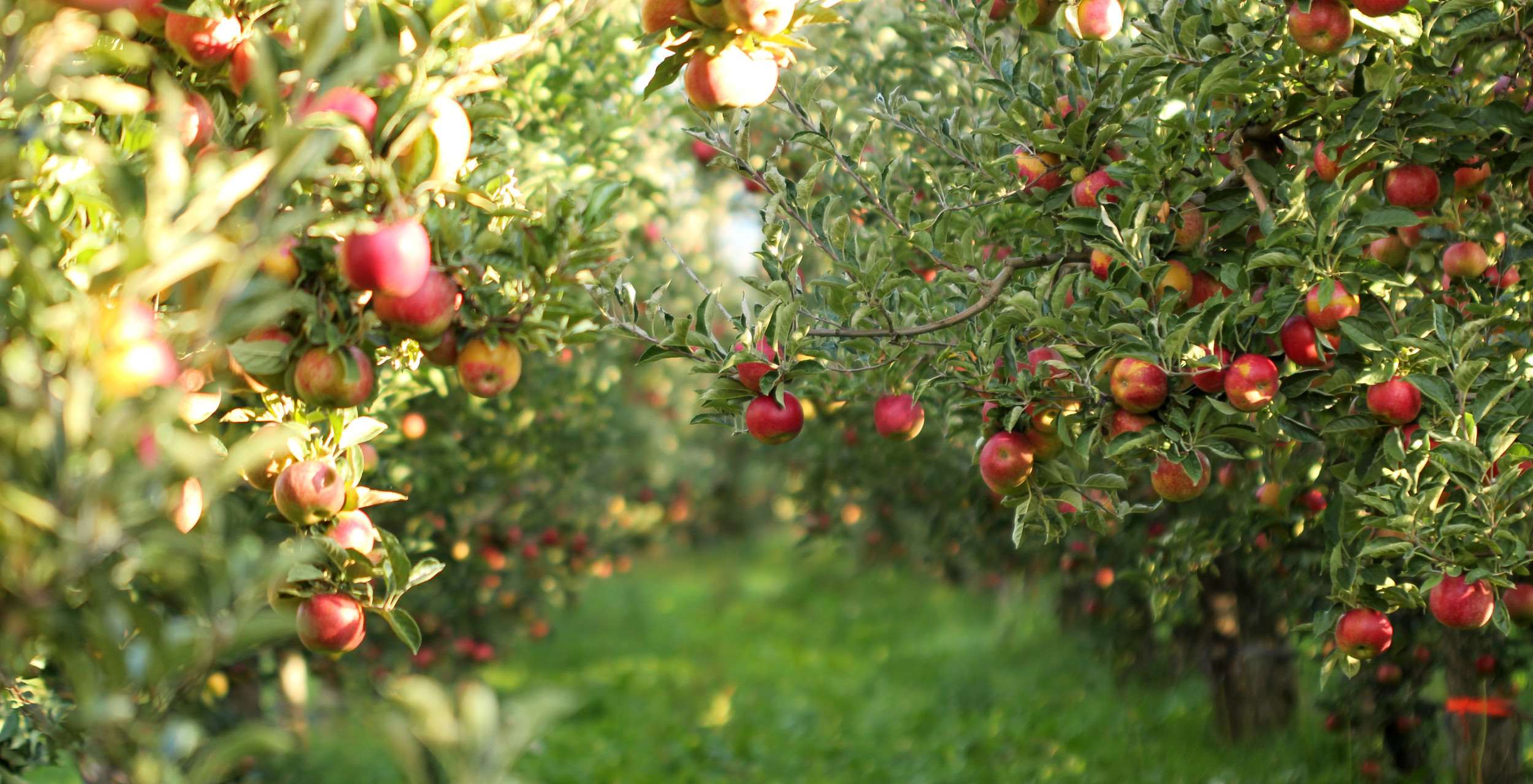

Getting Started
What To Know Before Planting Fruit Trees
Modified: February 10, 2024
Getting started with planting fruit trees? Here's what you need to know before you begin, from choosing the right tree to proper care and maintenance.
(Many of the links in this article redirect to a specific reviewed product. Your purchase of these products through affiliate links helps to generate commission for Chicagolandgardening.com, at no extra cost. Learn more)
Table of Contents
Introduction
Welcome to the world of home gardening, where the satisfaction of growing and harvesting your own fruit is just a few steps away. Planting fruit trees in your backyard not only adds beauty to your landscape but also provides you with a bountiful supply of fresh, flavorful fruits throughout the year. However, before you embark on this delicious endeavor, there are a few essential things you need to know.
First and foremost, selecting the right fruit trees for your specific climate and region is crucial. Different fruit tree varieties have varying requirements in terms of temperature, chill hours, and soil conditions. It’s important to choose trees that are suitable for your specific area to maximize their chances of thriving and producing a successful harvest.
Finding the ideal location for planting your fruit trees is another important consideration. Fruit trees need plenty of direct sunlight, so it’s essential to choose a spot in your garden that receives at least 6 to 8 hours of sunlight per day. Additionally, ensuring proper spacing between the trees is vital to avoid overcrowding and provide enough airflow for healthy growth.
An often overlooked aspect of fruit tree cultivation is understanding the soil conditions. Different fruit trees have different soil preferences, varying from well-draining to moist soil. Conducting a soil test will help you determine the pH level and nutrient content of your soil, enabling you to make any necessary amendments before planting.
Once you’ve identified the right fruit trees and suitable planting location, it’s time to prepare the planting site. Clear away any weeds, rocks, or debris from the area and loosen the soil to ensure the roots can penetrate easily. Adding organic matter such as compost or well-rotted manure can also help improve the soil quality and drainage.
When it comes to actually planting the fruit trees, be sure to dig a hole that is wide and deep enough to accommodate the roots without bending or crowding them. Gently place the tree in the hole, making sure that the graft union is above the soil line. Fill the hole with soil, firm it gently around the roots, and water thoroughly.
Proper watering and fertilization are essential for the health and growth of fruit trees. Water the trees deeply and consistently, keeping the soil moist but not waterlogged. Fertilize regularly with a balanced, slow-release fertilizer to provide the necessary nutrients for optimal growth and fruit production.
Pruning and training fruit trees is an essential practice to shape their growth, maintain a desirable size, and promote fruiting. Prune during the dormant season, removing any dead or diseased branches and shaping the tree according to your desired form. Training young trees with stakes, trellises, or espalier techniques can also help optimize growth and fruit production.
Pests and diseases can pose a significant threat to fruit trees, so it’s important to protect them. Monitor for signs of pest infestations and diseases and take appropriate measures to control them, such as using organic insecticides or attracting beneficial insects to your garden. Applying preventive sprays and maintaining good hygiene practices can go a long way in preventing issues.
Harvesting is the most rewarding part of growing fruit trees. Each variety has its own unique signs of ripeness, so it’s important to familiarize yourself with the specific indicators for each fruit. Regularly inspect the trees and harvest the fruits at their peak flavor and texture. Additionally, regular maintenance tasks such as pruning, mulching, and inspecting for any signs of disease should be part of your routine to ensure healthy tree growth.
By following these key steps, you can successfully plant and maintain fruit trees in your garden. Remember, every fruit tree is a long-term investment, so be patient and diligent in nurturing them. Now that you have the essential knowledge, it’s time to embark on your fruit-growing journey and enjoy the sweet rewards of your labor in the seasons to come.
Selecting the Right Fruit Trees
When it comes to selecting fruit trees for your garden, it’s important to make choices that are well-suited to your specific climate, soil conditions, and desired outcomes. Different fruit trees have different requirements, so taking the time to research and choose the right varieties can significantly increase your chances of success.
The first factor to consider is your climate. Some fruit trees, such as apples and pears, thrive in temperate climates with distinct seasons and a certain number of chill hours. On the other hand, citrus trees, like oranges and lemons, prefer warmer regions with mild winters. Research the hardiness zones and chill hour requirements of different fruit trees to determine which ones are best suited for your area.
Another important consideration is the space available in your garden. Fruit trees can vary greatly in size, ranging from compact dwarf varieties to large standard trees. Understanding the growth habits and ultimate size of the trees you’re interested in will allow you to plan accordingly and ensure proper spacing. This not only prevents overcrowding but also allows for adequate airflow and sunlight, which are essential for healthy tree growth and fruit production.
The type of fruit you want to grow is also a factor to consider. Consider your preferences and the market demand for certain fruits in your area. If you enjoy cooking and baking, you might lean towards fruit trees that produce versatile fruit, such as apples or peaches. Alternatively, if you have a sweet tooth, planting fruit trees like cherries or plums might be more appealing. Additionally, some fruit trees, like figs or persimmons, offer unique flavors and textures that can be a delightful addition to your garden.
It’s crucial to consider the pollination requirements of fruit trees as well. Some varieties are self-pollinating, meaning they can set fruit with their own pollen, while others require cross-pollination with another compatible variety to produce fruit. If you have limited space or are only interested in growing a few trees, choosing self-pollinating varieties can simplify the process. However, if you have space for multiple trees and want to ensure a plentiful harvest, selecting compatible pollination partners is essential.
Lastly, don’t forget to consider the maintenance requirements of the fruit trees you’re considering. Some varieties are more disease-resistant and require less spraying or pruning, making them easier to care for. Others may be more susceptible to pests or diseases, requiring extra attention and management techniques. Taking into account the time and effort you’re willing to invest in maintenance will help you select fruit trees that align with your lifestyle and gardening goals.
By taking these factors into consideration when selecting fruit trees, you can ensure a successful and enjoyable gardening experience. Researching and choosing the right varieties for your climate, available space, preferred fruit, pollination needs, and maintenance requirements will set you up for a fruitful harvest for years to come.
Finding the Ideal Location for Planting
When it comes to planting fruit trees, finding the ideal location is crucial for their growth and productivity. Choosing the right spot in your garden can greatly influence the health of your trees and the quality of the fruits they produce. Here are some considerations to keep in mind when searching for the perfect location.
One of the most important factors to consider is sunlight. Fruit trees thrive when they receive a minimum of 6 to 8 hours of direct sunlight each day. Sunlight is crucial for photosynthesis, the process by which trees convert sunlight into energy to fuel growth and fruit production. Before selecting a location, observe your garden throughout the day to identify spots that are free from shade and receive ample sunlight.
Adequate airflow is another essential factor in finding the ideal location. Good air circulation helps prevent the development of diseases by drying out excess moisture on the leaves and reducing the risk of fungal infections. Avoid planting fruit trees in areas that are surrounded by tall structures, such as fences or walls, as these can block the natural flow of air. Instead, choose an open area that allows for a steady breeze to pass through the trees.
Soil quality and drainage are also important considerations. Fruit trees prefer well-draining soil that allows excess water to escape. While some trees can tolerate slightly different soil conditions, it’s best to avoid areas that are prone to waterlogging or have heavy clay soil. Conduct a soil test to determine the pH level and nutrient content of your soil. This will help you make any necessary amendments, such as adding organic matter or adjusting the pH, to create an optimal growing environment for your fruit trees.
Space is another factor to keep in mind when selecting a location. Fruit trees need sufficient room to grow and spread their branches. Avoid planting them too close to structures or other plants that may hinder their growth. Consider the eventual size of the tree and ensure that there is enough space for it to reach its full potential without being cramped. Proper spacing allows for better airflow and makes maintenance tasks such as pruning and harvesting easier.
Consider the slope of your garden when choosing a location for planting. Avoid low-lying areas that may collect excess water, as this can lead to root rot and other water-related issues. Instead, opt for slightly elevated areas or gentle slopes to ensure proper drainage and prevent waterlogged roots.
Lastly, accessibility is an important consideration. Choose a location that is easily accessible for maintenance tasks such as watering, fertilizing, pruning, and harvesting. Having your fruit trees located close to a water source will also make it more convenient to provide the necessary irrigation.
By taking all these factors into account, you can find the ideal location for planting your fruit trees. Remember, a well-planned and strategically chosen spot will contribute to the overall health and productivity of your trees, ensuring a bountiful harvest of delicious fruits for years to come.
Understanding Soil Conditions
When it comes to planting fruit trees, understanding the soil conditions in your garden is essential for their overall health and productivity. The type of soil in which your trees are planted can directly affect their nutrient uptake, water drainage, and overall growth. By understanding your soil conditions, you can make informed decisions and implement necessary amendments to create an optimal environment for your fruit trees.
One of the first steps in understanding soil conditions is to determine the texture of your soil. Soil texture refers to the proportions of sand, silt, and clay particles. Sandy soil has larger particles and drains quickly, while clay soil has smaller particles and retains more water. Loam soil, which is often considered ideal for growing plants, is a balanced combination of sand, silt, and clay that provides good drainage while retaining sufficient moisture.
Performing a simple soil texture test can give you an indication of your soil type. Take a handful of moist soil and try to form it into a ball. Sandy soil will crumble easily, while clay soil will hold together and may even feel sticky. Loam soil will form a ball that will hold its shape but still break apart easily.
Aside from soil texture, pH level is another critical aspect of soil conditions. pH measures the acidity or alkalinity of the soil and affects nutrient availability for plants. Most fruit trees prefer a slightly acidic to neutral pH range of 6.0 to 7.0. Conducting a soil pH test will help you identify whether your soil falls within this range or if it requires adjustment.
If your soil pH is too high (alkaline), you can lower it by adding organic matter such as compost, peat moss, or sulfur. On the other hand, if your soil pH is too low (acidic), you can raise it by adding lime or wood ash. It’s important to follow the recommended application rates and retest the pH after making adjustments to ensure you have achieved the desired range.
In addition to texture and pH, understanding the nutrient content of your soil is crucial for the proper growth and development of fruit trees. Conducting a soil test will provide you with valuable information about the levels of essential nutrients such as nitrogen, phosphorus, and potassium, as well as secondary nutrients and micronutrients. Based on the results, you can then apply the appropriate fertilizers or soil amendments to address any nutrient deficiencies.
Soil drainage is another consideration when it comes to understanding soil conditions. Fruit trees prefer well-draining soil to prevent waterlogged roots, which can lead to root rot and other issues. If your soil is heavy clay or tends to hold excess water, amending it with organic matter, such as compost or well-rotted manure, can improve drainage.
Lastly, pay attention to compaction and soil structure. Compacted soil can restrict root growth and impair water movement. It’s important to aerate compacted soil by loosening it with a garden fork or using a core aerator. In addition, improving soil structure by incorporating organic matter can help create a more favorable growing environment for your fruit trees.
By understanding the soil conditions in your garden, you can make informed decisions and implement necessary amendments to ensure the health and productivity of your fruit trees. Soil texture, pH level, nutrient content, drainage, and soil structure all play vital roles in providing your trees with the optimal growing environment they need to thrive and produce a bountiful harvest.
Preparing the Planting Site
Preparing the planting site is a crucial step when it comes to successfully establishing fruit trees in your garden. Proper site preparation ensures that the soil is ready to support healthy root growth, provides optimal conditions for nutrient uptake, and allows the tree to establish itself in its new environment. Here are some important steps to follow when preparing the planting site for your fruit trees.
The first step is to clear the planting area of any weeds, grass, rocks, or debris that may impede the growth of the tree. Use a rake or garden fork to remove any unwanted vegetation and ensure a clear and clean space for your fruit tree to thrive.
Next, it’s essential to evaluate the soil drainage in the planting area. Fruit trees require well-draining soil to prevent waterlogged roots, which can lead to root rot and other diseases. If your soil tends to retain water or becomes compacted easily, consider improving drainage by adding organic matter, such as compost or well-rotted manure, to help loosen the soil structure and enhance its ability to drain excess water.
Before planting, it’s also recommended to conduct a soil test to determine the pH level and nutrient content of your soil. Based on the results of the soil test, you can make any necessary amendments to ensure optimal conditions for your fruit tree’s growth. This may include adding fertilizers or adjusting the pH level with materials such as lime or sulfur.
Once the soil has been cleared and amended if necessary, dig a hole that is wide and deep enough to accommodate the tree’s root system without bending or crowding. The size of the hole should be larger than the actual root ball to allow for proper root spread. A general guideline is to make the hole two to three times wider and slightly shallower than the depth of the root ball.
When removing the tree from its container or wrapping, be sure to handle it gently to avoid damaging the root system. Place the tree in the center of the hole, making sure that the graft union (if present) is above the soil line. Fill the hole with soil, firming it gently around the roots to eliminate any air pockets.
Watering the newly planted tree is crucial to help settle the soil and provide initial moisture. Give the tree a deep watering immediately after planting and continue to water regularly, keeping the soil moist but not waterlogged. Applying a layer of mulch around the tree, but not directly against the trunk, can help conserve moisture and suppress weed growth.
Proper site preparation is essential for the success of your fruit trees. Clearing the area of debris, improving drainage, conducting soil tests, digging an appropriate planting hole, and providing adequate water after planting are all necessary steps to ensure your fruit tree has the best possible start in its new home.
Planting the Fruit Trees
Planting fruit trees is an exciting step in your gardening journey. Proper planting techniques and attention to detail during this process are essential for the long-term health and productivity of your trees. Here are some important steps to follow when planting your fruit trees.
The first step is to carefully remove your fruit tree from its container or wrapping. Handle the tree gently, taking care not to damage the roots. If the tree has a root ball wrapped in burlap, you can leave the burlap intact as it will decompose over time. However, if it is in a plastic container, you should remove it completely.
Before planting, it’s a good idea to soak the root ball in water for about an hour. This will help rehydrate the roots and minimize stress on the tree during the transplanting process.
Next, dig a hole that is wider and slightly shallower than the depth of the root ball. Make sure the hole is large enough to accommodate the roots without bending or crowding. Gently place the tree in the center of the hole, making sure the graft union (if present) is above the soil line.
Backfill the hole with soil, firming it gently around the roots to eliminate any air pockets. Be careful not to compact the soil too tightly, as this can hinder root growth and water penetration. The soil should be firmly packed but still allow for good drainage.
After planting, create a small circular basin around the base of the tree to aid in watering. This will help direct water towards the root zone and ensure that the tree receives adequate moisture.
Give the tree a deep watering immediately after planting to settle the soil and provide ample moisture for the roots. Continue to water the tree regularly, especially during the first growing season, to promote healthy root establishment.
Applying a layer of organic mulch, such as wood chips or straw, around the base of the tree will help conserve moisture, suppress weed growth, and regulate soil temperature. However, make sure to keep the mulch a few inches away from the trunk to prevent moisture buildup and potential rotting.
Staking the tree may be necessary to provide stability, especially if you live in an area prone to strong winds or have a large tree. Use two stakes placed on opposite sides of the tree, being careful not to damage the roots. Secure the tree to the stakes with soft ties, making sure not to tie it too tightly.
Lastly, aftercare is important to support the tree’s growth. Regularly monitor the tree for any signs of stress or disease. Prune any broken or dead branches, and consider using tree guards or netting to protect against animal damage.
By following these planting guidelines, you can give your fruit trees the best possible start. Proper planting techniques and care afterward are key to ensuring the long-term success and productivity of your trees.
Watering and Fertilizing
Watering and fertilizing are essential components of fruit tree care that directly impact their growth, health, and fruit production. Properly providing water and nutrients ensures that your fruit trees get the necessary resources to thrive and produce flavorful and abundant harvests. Here are some important guidelines for watering and fertilizing your fruit trees.
Watering is crucial, especially during dry periods, to prevent drought stress and maintain optimal growth. Fruit trees generally require about an inch of water per week, either from rainfall or supplemental irrigation. However, the exact amount may vary depending on factors such as soil type, weather conditions, and the stage of tree development.
When watering, it’s important to give the tree a deep soaking rather than frequent shallow watering. This encourages the roots to grow deeply, making the tree more resilient against drought conditions. Water the tree slowly and evenly around the area under the canopy, extending beyond the drip line of the branches. Avoid overwatering, as excessive moisture can lead to root rot and other issues.
It’s also important to pay attention to the moisture level of the soil. Insert a finger into the soil around the root zone to gauge its moisture content. If the soil feels dry about an inch below the surface, it’s time to water. However, if the soil feels moist, hold off on watering until it dries out a bit.
Fertilizing fruit trees is essential to provide them with the necessary nutrients for healthy growth and fruit production. It’s best to conduct a soil test to determine the nutrient content of your soil. Based on the results, you can then apply fertilizers to address any deficiencies.
Generally, fruit trees benefit from a balanced fertilizer with a ratio such as 10-10-10 or 14-14-14. Apply fertilizer in early spring, just as the tree begins to emerge from dormancy. Sprinkle the granules evenly around the tree, starting a few inches away from the trunk and extending beyond the drip line. Avoid fertilizing late in the season, as it can promote late growth that may be susceptible to winter damage.
In addition to granular fertilizers, you can also use organic options such as compost, aged manure, or organic fish emulsion to provide nutrients to your trees. These organic materials not only provide essential nutrients but also improve soil structure and microbial activity.
It’s important to follow the recommended application rates for fertilizers and avoid overfertilizing. Too much fertilizer can burn the roots and cause excessive vegetative growth at the expense of fruit production. Always water the tree thoroughly after applying fertilizers to ensure proper absorption.
Regular monitoring of your fruit trees is crucial to assess their watering and fertilizing needs. Pay attention to the health of the leaves and the amount of new growth. Adjust your watering and fertilization practices as needed based on visual cues and the specific requirements of your tree varieties.
By providing consistent and appropriate watering and fertilization, you can ensure the optimal health and growth of your fruit trees. Healthy trees are more resistant to pests and diseases and are more likely to produce abundant, high-quality fruits for you to enjoy.
Pruning and Training the Trees
Pruning and training fruit trees is an important aspect of their care and maintenance. Proper pruning helps shape the tree, promotes good air circulation, controls its size, and encourages optimal fruit production. Training the tree from a young age ensures that it grows in a desirable form and maximizes its potential. Here are some guidelines for pruning and training your fruit trees.
Pruning fruit trees should begin in their early years to establish a strong framework and promote good branch structure. The first step is to remove any dead, damaged, or diseased branches. These branches can serve as entry points for pests or diseases and can hinder the overall health of the tree.
Next, consider the tree’s overall shape and form. Decide on the desired height and spread of the tree and remove any branches that are growing in the wrong direction or crossing each other. The goal is to create an open, well-spaced framework that allows for adequate sun exposure and airflow.
Pruning cuts should be made just above a bud or lateral branch, at a slight angle away from the bud. This promotes outward growth and helps prevent water from pooling on the cut surface. Avoid leaving stubs, as they can become entry points for disease and pests.
As the tree grows, one of the key goals of pruning is to maintain a balance between vegetative growth (branches and foliage) and fruit production. Too much vegetative growth can result in reduced fruit quality and excessive shading, while too little growth can lead to weak fruit production. Regular pruning helps strike this balance.
Training young fruit trees is equally important as pruning. Begin by selecting a central leader, which is the main upward-growing stem. Remove any competing leaders or branches that may compete for dominance. This helps establish a strong central structure.
For certain tree forms, such as espalier or trellis training, additional steps are required. This involves training the branches to grow along a flat surface or in a specific pattern. Use stakes, wires, or other support systems to guide the branches and secure them in place. Regularly prune and tie the branches to maintain the desired shape and prevent them from growing out of bounds.
Throughout the tree’s life, continue to monitor and selectively prune to maintain the desired form and manage the balance between vegetative growth and fruit production. Prune during the dormant season, typically in late winter or early spring before new growth begins. Avoid pruning during periods of active growth, as it may inhibit the tree’s ability to heal wounds.
Proper pruning tools, such as sharp and clean pruning shears or saws, are essential for making precise cuts and minimizing damage to the tree. Before pruning, sanitize the tools to prevent the spread of diseases.
Remember that each fruit tree species and variety may have their own specific pruning and training requirements. Research the particular needs of your tree species to ensure you are pruning and training appropriately.
By regularly pruning and training your fruit trees, you can maintain their health, shape, and productivity. Pruning not only improves fruit quality and size but also enhances the overall aesthetics of the tree. With proper care and attention, your fruit trees will be well-prepared to yield abundant and high-quality harvests.
Protecting Against Pests and Diseases
Protecting fruit trees from pests and diseases is crucial for maintaining their health and ensuring a successful harvest. Pests, such as insects and rodents, can cause damage to the foliage, flowers, and fruits of the trees. Diseases, including fungal and bacterial infections, can weaken the tree and reduce fruit quality. Implementing preventative measures and maintaining good hygiene practices are key to protecting your fruit trees. Here are some guidelines for safeguarding your trees against pests and diseases.
Regular monitoring of your fruit trees is essential for early detection and prevention of pest infestations. Inspect the leaves, branches, and fruits regularly for any signs of pests or diseases, such as chewed leaves, distorted growth, or discoloration. Prompt action at the first sign of trouble can help prevent the issue from spreading and causing extensive damage.
Attracting beneficial insects, such as ladybugs and lacewings, can help control common pests like aphids and mites. Planting companion plants that attract beneficial insects, such as dill, yarrow, or marigold, can create a diverse and balanced ecosystem in your garden.
Implementing physical barriers, such as nets or fencing, can help protect fruit trees from larger pests like birds or mammals. Covering the trees with nets when the fruits are ripening can prevent birds from devouring the harvest. Fencing can deter animals like rabbits or deer from damaging the trees.
Practicing good garden hygiene is crucial for preventing the spread of diseases. Remove fallen leaves, fruit, and other debris from the ground to eliminate potential breeding grounds for pests and pathogens. Properly dispose of any diseased plant material to prevent the spread of infections.
Applying organic insecticides or using biological controls can help manage pest populations. Organic insecticides, such as neem oil or insecticidal soaps, can be used to control pests without causing harm to beneficial insects or the environment. Biological controls, such as introducing predatory insects like ladybugs or using nematodes to target specific pests, can also be effective in reducing pest populations.
Applying preventive fungicides can help protect fruit trees against common fungal diseases. Copper-based fungicides or sulfur sprays are often used to prevent or control diseases like powdery mildew or peach leaf curl. Be sure to follow the instructions on the product label and apply the fungicides at the recommended intervals.
Proper irrigation practices can also aid in pest and disease management. Overwatering can create a favorable environment for fungal infections, while underwatering can stress the tree and make it more susceptible to pests. Providing consistent, deep watering that allows the soil to dry out slightly between watering can help maintain the tree’s health and resilience.
Regularly consulting gardening resources and local agricultural extension offices can provide valuable information about potential pests and diseases in your area. Stay informed about common issues and be proactive in implementing preventative measures.
Remember that prevention is key when it comes to protecting your fruit trees. Maintaining good garden hygiene, monitoring for pests and diseases, implementing cultural controls, and using organic treatments when necessary can help keep your trees healthy and productive. With proper care and vigilance, you can safeguard your fruit trees and enjoy a bountiful harvest.
Harvesting and Maintenance
Harvesting the ripe and delicious fruits from your fruit trees is one of the most rewarding moments for any gardener. Knowing the right time to harvest and practicing proper maintenance techniques are essential for maximizing the quality and quantity of your harvest. Here are some guidelines for harvesting and maintaining your fruit trees.
Each fruit variety has its own specific signs of ripeness, so it’s important to familiarize yourself with the specific indicators for each type of fruit you are growing. For example, apples are typically ready to harvest when they are firm and have developed their characteristic color, while peaches are best harvested when they are slightly soft and fragrant.
Regularly inspect your fruit trees during the harvest season. Ripe fruits should be easily detachable from the branch with a gentle twist or pull. Harvest each fruit carefully to avoid bruising or damaging the surrounding branches.
Timing is crucial when it comes to harvesting. It’s important to harvest the fruits at their peak flavor and texture. Harvesting too early can result in underripe and bland fruits, while waiting too long can lead to overripe and mushy fruits. Regularly monitor the progress of your fruits and harvest them when they are at their prime.
When harvesting, use clean and sharp pruning shears or scissors to cut larger fruits like apples or pears. For smaller fruits like berries or cherries, gently pluck them from the plant using your fingers. Handle the fruits with care to avoid bruising and handle them by the stem or calyx whenever possible to minimize damage.
Maintenance tasks are necessary throughout the year to keep your fruit trees healthy and productive. Pruning during the dormant season, usually in late winter or early spring, allows you to remove dead or diseased branches and shape the tree’s structure.
Mulching the base of your fruit trees with organic material, such as wood chips or straw, helps conserve moisture, suppress weeds, and regulate soil temperature. Apply a layer of mulch around the base of the tree, extending out to the drip line, but make sure to keep it a few inches away from the trunk to prevent moisture buildup and potential rotting.
Regularly monitor your fruit trees for any signs of pests or diseases. Check the leaves, branches, and fruits for any unusual spots, discoloration, or damage. Swiftly take action at the first sign of trouble to prevent the issue from spreading further.
Fertilize your fruit trees regularly to ensure they have the necessary nutrients for optimal growth and fruit production. Follow the recommended application rates and timing specified for your specific tree species. Typically, fertilization is done in early spring as the tree emerges from dormancy.
Keep an eye on the overall health of the trees throughout the growing season. Provide adequate water, especially during dry periods, to prevent stress and fruit drop. Monitor for signs of nutrient deficiencies, such as yellowing leaves or stunted growth, and address them promptly with appropriate fertilizers or soil amendments.
Regularly prune and thin your fruit trees to maintain an open canopy, promote airflow, and prevent overcrowding. Thin out excess fruits to ensure better fruit size, quality, and overall tree health. Prune away any suckers or watersprouts that may emerge from the base of the tree or along the branches.
By practicing regular maintenance and proper harvesting techniques, you can enjoy the bountiful rewards of your fruit trees. Regularly inspecting, harvesting at the right time, and providing necessary care throughout the year will help ensure healthy and productive trees for many seasons to come.
Conclusion
Planting and caring for fruit trees can be a fulfilling and rewarding experience, providing you with a bountiful supply of fresh and flavorful fruits right in your backyard. By following the essential steps outlined in this guide, you can set yourself up for success and enjoy the beauty and abundance of your own fruit orchard.
Selecting the right fruit trees for your specific climate, finding the ideal location for planting, understanding soil conditions, and preparing the planting site are crucial steps in ensuring the health and growth of your trees. Proper watering and fertilizing provide the necessary resources for optimal growth and fruit production.
Pruning and training your fruit trees shape their growth, maintain their form, and maximize their potential, while protecting them against common pests and diseases is essential for their overall health and productivity.
Finally, harvesting at the right time and practicing regular maintenance tasks, such as pruning, mulching, and monitoring for pests and diseases, help maintain the health and quality of your fruit trees year after year.
Remember, the journey of growing fruit trees requires patience and dedication. Each tree is a living organism that requires care and attention throughout its lifecycle. By applying the knowledge and techniques outlined in this guide, you are well-equipped to embark on your own fruit-growing journey and enjoy the sweet rewards of your labor.
So go ahead and plant those fruit trees, nurture them with care and watch as they flourish and bear fruits that will delight your senses. Happy fruit tree gardening!


